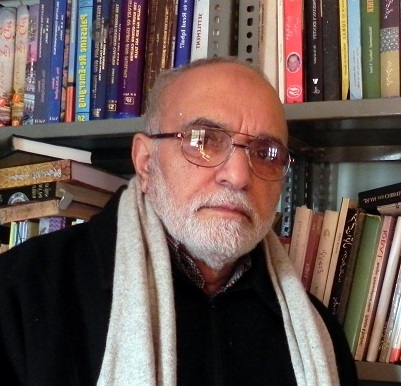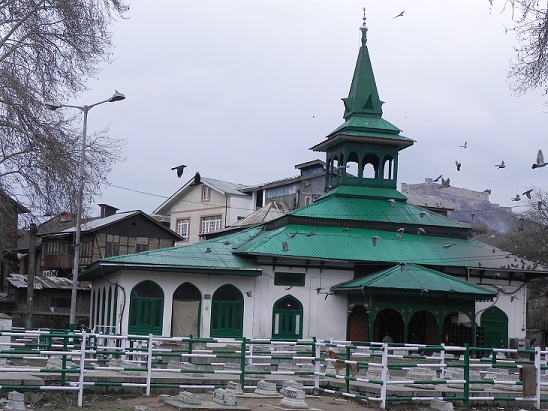Peace Watch » Kashmir-Talk » July 13, Commemorating Valour and Martyrdom
July 13, Commemorating Valour and Martyrdom
My Memoir

July 13, Commemorating Valour and Martyrdom
By Z. G. Muhammad
The Martyrs day! July 13! My siblings, friends, and I waited for weeks together for this day. My mother announced the day byy starting cleaning of the house like on all other religious days; Eid-ul-Fitar, Eid-ul-Adha, Urs-e- Nabi, Meraj-ul-Alam and festivals of other saints buried in our locality. It was a full week of cleaning in our home. She paid a lot of attention towards cleaning of the Kani, the top floor of the house. Windows of this floor opened on two sides towards the main road and presented a panoramic view of the road leading to the martyrs’ graveyard. Even the attic of the house, which remained abandoned for the whole of the year caught her attention. It had two windows that opened towards the last resting place of the men who received volleys of bullets in their chests some decades back. Sometimes the walls of the house were painted a fresh for the occasion.

It was not just a day of commemoration, for my siblings and me. It was not only a display of a ‘valorized national narrative’ that passed through the streets outside of our home. No doubt, it was a reminder to the collaborators that no tyrant can reign forever, and sacrifices made by the sons and daughters of ultimately make them bit the dust- their fortresses come a cropper, and their bastions cave in and turn into massive debris. For me, it was a grand pageant- a spectacle of flowers. It was a mega carnival that enthused thousands to throng the streets of downtown Srinagar- a mute witness to the saga of Kashmir.
My friends and I knew that it was the martyr’s day. It is not that we did not understand the meaning of the word martyr many of my friends and I as toddlers had seen men being fired upon by soldiers like coots and waterfowls shot in the Dal Lake by reckless bird shooters. The Gory happenings leave a more profound and lasting impression on tender minds than many pleasing stories, and they rarely etherize with age. The grand spectacle of flowers, musicians and folk dancers also reminded me of a chilling experience of watching the first martyr at the age of five from the latticed window of our house. To this day, I have a very vivid impression about his body being carried on a charpoy with young men in frenzy crying slogans full throat. He was the lone son of the potter woman, who sold pots in our locality. She was a familiar face in our Mohalla. She arrived every day from Kralayar, an area in Ranawari Township barely a mile from our area in the wee hour with massive vat on her head filled with earthenware utensils, pots and toys: horses, zanapana palanquin, miniature Samovar, and many assortments – these were our dolls and toys.
Then we were yet to understand in the words of Mahmud Darwish, “He who writes his story inherits the land of that story.” But, it was the July 13, holiday that made us understand that the big pageants arranged by the state and political parties were the ‘institutional memory of the day; that had revived a nation of glorious past. The preparations for the day started weeks earlier with a battalion of workers of Srinagar Municipality draped in blue uniform arriving in in our locality to clean the open drains and the street. Then waterman with their leather sacks slinging from their shoulders watered the roads. The cleanliness drive in and around our locality continued for about a week. Later the fire brigade vehicle arrived to wash the tombstones of the martyrs of July 13, 1931, and after. The memorial tablet erected on the gravesite carrying the names of the twenty-two martyrs with their age and address would be painted in red, and their names made distinct in golden ink.
The procession would start from the Mujahid Manzil, then headquarters of the National Conference with Bakshi Ghulam Muhammad then Prime Minister of the State as its head. The workers of the National Conference on July in advance would decorate the two-kilometre road with buntings, and red arches and these would be joined by traders organizations who equally partook in adorning the streets with multi-coloured cloth archways popularly known as Dee-deed‘.
People from all parts of the city on the D-Day converged into in my birth burg. They occupied every open space, rooftops, balconies and windows of all houses on the two sides of the roads. We also got our quota of guests, mostly women, some known and some unknown. The children would sit on the windows much before elders could occupy them. The carnival would arrive near our home by about eleven.
I was amazed at people’s discipline on this day. No sooner the police contingent heading the carnival reached in our locality people on their own made way for the procession. The police contingent was followed by army in olive green with 303 rifles slinging from their shoulders- perhaps these were the soldiers of Kashmir militia. These contingent were, accompanied by armed police detachments, companies of fire services and contingents of scouts from some premier schools of the city. These would be followed by bagpipers and drum beaters draped in red and blue uniforms- I had a special admiration for the police band for its lilting tunes and turbans that carried a royal touch about them. The police band was followed by school bands- some in green, some in yellow and some in red costumes. The police band was followed by specially made truck festooned with fresh flowers. On this truck fitted megaphone stood the then Prime Minister of the state by Bakshi Ghulam Muhammad flanked by his cabinet colleagues and party leaders. A short-statured person, Abdul Gaffar Bhat raised slogans in support of the Prime Minister. This truck was followed by another truck filled with supporters of the Prime Minister.
The trucks would be flowed by groups of folk musicians, drum beaters and clarinet players. There was hardly a trade union or an association that was not a part of this carnival of flowers. The Kashmir Motor Driver Association would make its presence felt with its fully adorned buses with sazandars folk singers singing full throat on loudspeakers. A contingent of fully decorated tongas, a fully furnished boat placed on a hand-driven cart playing a famous song of film Shaheed, ‘Shaheed Kee Joo Mout Hai Qoum Kee Woh Hayat Hai” represented boatman’s association.
These were followed by a whole caravan of horse-driven carts with traditional men folk dancers dancing to the drum beats of folk musicians representing one or another association. Of all the troupes in the procession, I liked the group of the Municipal workers. Laced would wooden swords, they played “talawr-e- Jung” to the drum beats of their fellows. Some of these municipal workers performed like ace artisan and filled our hearts with joy.
On its arrival, while the Prime Minister, Bakshi laid flower wreaths on the tombstones, the police and other bands played martial tunes and soldiers, and armed police bowed their guns in salutation. After the wreath-laying ceremony was over, the State flag was hoisted amidst warlike music by the tidy uniformed bugle players.
It took about one and half hour to the procession to pass through our street. Towards the end, Prime Minister Bakshi Ghulam Mohammad would address the gathering at Mazar-i-Shuhdha.
N.B.
Besides, official ceremonies on this day, from 1964 onwards the Plebiscite Front and the Awami Action Committee took massive procession to the martyrs’ graveyard yard at Khoja Bazar- the Front started from the Mujahid Manzil in early hours of Morning and the Awami Action Committee from the Muslim Park in the afternoon. Notwithstanding working from different platforms both demanded Right to Self-Determination as guaranteed in UN resolutions.
Filed under: Kashmir-Talk







